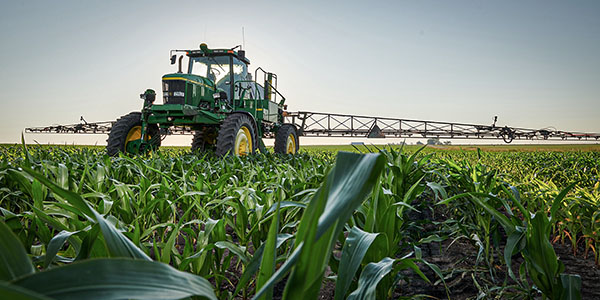AGRONOMICSUPPORT
YOU CAN TAKETO THE FIELD
Early Season Weed Pressure - What's The Yield Loss?
As you walk through early season corn and soybeans in May, you’ll begin to see small weeds that are starting to grow. As agronomists we often hear “Those early weeds are too small to hurt anything.”, but this can be a detrimental misconception if you’re aiming for high yielding crops. They may not look like they’re capable of much harm, but many studies indicate the opposite – these weeds can cause big problems for farmers. They rob the cash crop of water and nutrients, and dense weeds prevent the soil from warming up with their shade. So how much damage can this do to crops? Let’s find out.
The most competitive weeds of the season are early weeds. In this case, we’re looking at weeds that are three to four inches tall and corn at V3 to V4 stages. Weeds at this stage can sequester 30-40lbs of nitrogen per acre – and once nitrogen is taken up by weeds, it’s not coming back to the soil. Additional nitrogen can be added, but the weed has already taken nitrogen from the crop and fighting back will be costly.
Yield Loss From Weed Pressure
Loss of nitrogen from these weeds will lead to loss of corn yields, as well. If you don’t terminate the weeds at three to four inches, corn yields can be reduced by three bushels per day, every day you delay. Some studies from the University of Minnesota also show a 12-13 bushel loss the first week and 27-29 bushel loss in the second week. With corn prices today, this can lead to a large loss of profitability.
In soybeans, delaying burndown applications until VC or V1 could result in as much 8bu losses and waiting till V3 could be 9+ bushel loss, according to Michigan State University. Weeds in soybeans can grow a little taller before losses are seen, which is usually seen around six inches.
Managing Early Season Weed Pressure
A total post emergence program can be risky because timing is determined by mother nature. It is recommended to use an integrated program with some residual products early, or split apply preplant and pre-emerge products followed by post emerge products. Doing this will help reduce the risk of yield loss and help with the timing of application and weed spectrum. Many farmers run reduced rates of soil residue herbicides to save cost, but this can be a set up to fail, depending on weather conditions and weed pressure. Full rates provide a bigger window of control that you do not get with reduced rates. Always check the label for these rates based on soil types.






Technical Team Agronomist